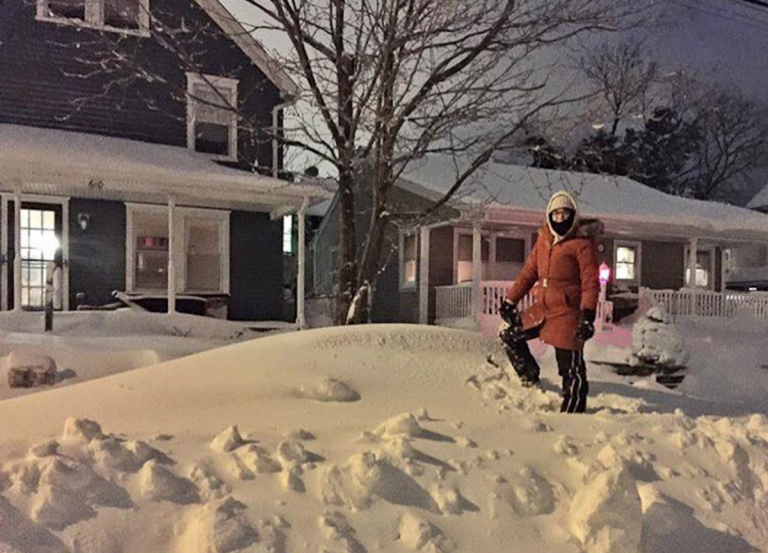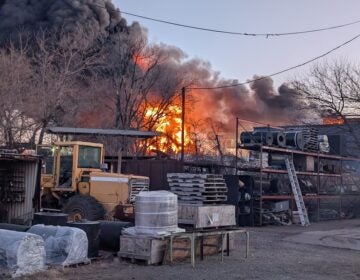4 years ago, the Jersey Shore was dealing with a blizzard, tidal flooding
A massive blizzard began impacting the region four years ago Wednesday.

Caitrin Dunn stands on her buried car in Monmouth County's Avon. (Photo courtesy of Jennifer Husar)
A massive blizzard that dumped nearly two feet of snow on portions of the Jersey Shore, generated major tidal flooding in areas, and knocked out power to nearly 100,000 utility customers began impacting the region four years ago Wednesday.
New Jersey State Climatologist Dr. David A. Robinson described the blizzard as a “doozy” in his January 2016 weather recap.
“Snow began falling in the south during early evening of the 22nd, moving steadily northward,” he wrote. “The intensity of the storm grew overnight, with heavy snow falling by the morning of the 23rd, winds howling, and ocean waters pouring into coastal communities at times of high tide after daybreak and later in the evening.”
When snowfall tapered off during the evening, nearly two feet of snow was reported to the National Weather Service in the northern portion of the Shore: 22″ in Red Bank, 21″ in Jackson, and 20″ in Brick, with lesser amounts at the immediate coast. An all-time record of 10.1″ was set in Atlantic City.
Cape May County saw the lowest snowfall accumulations due to mixed precipitation, with 11.3″ reported in Wildwood Crest and 7″ in Cape May.
But heavy snow was far from the only storyline. Wind gusts caused power outages throughout the Shore. Long Beach Island’s Harvey Cedars recorded a gust up to 64 mph, and Monmouth County’s Sea Girt registered a 60 mph gust, according to Robinson’s report.
“Such widespread strong winds had not been observed since Sandy in October 2012, though in most coastal locations gusts were 20 mph lower than in Sandy (except south of Atlantic City where they were nearly equivalent) and up to 30 mph lower inland,” he wrote.
Tidal flooding was also a major problem. Record flooding was recorded in Cape May County, where several people were rescued from homes. Police in West Wildwood reported extensive flooding and storm debris strewn across the municipality.
To put that in perspective, the highest Sandy surge occurred in Monmouth and Ocean counties, not in Cape May County, where the Sandy surge was lower.
In Long Beach Island’s Beach Haven, the firehouse was inundated with floodwaters.
Moderate to major beach erosion also occurred: 19 beaches suffered major damage, according to the New Jersey Department of Environmental Protection.
Nearly all of the protective “sand mounds” in Ocean County’s Ortley Beach were washed away, and beach buggy access in Island Beach State Park was prohibited for days due to unsafe conditions.
Despite the adverse conditions, humanity was on full display during the blizzard when a Jeep club drove more than 150 essential personnel to work and assisted stranded motorists.
President Barack Obama later declared New Jersey a major disaster area, with damage estimates in the state exceeding $80 million.
WHYY is your source for fact-based, in-depth journalism and information. As a nonprofit organization, we rely on financial support from readers like you. Please give today.




